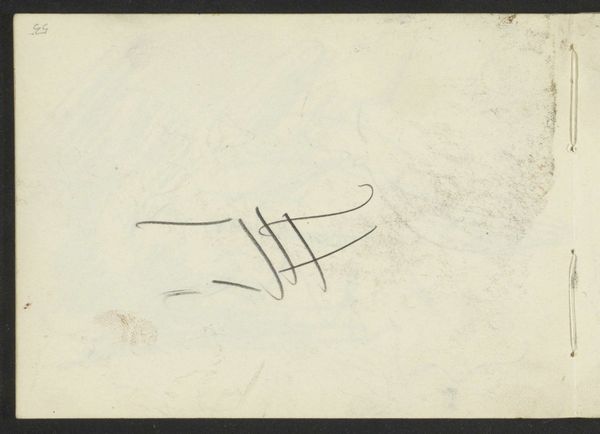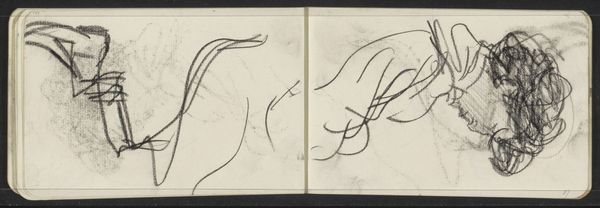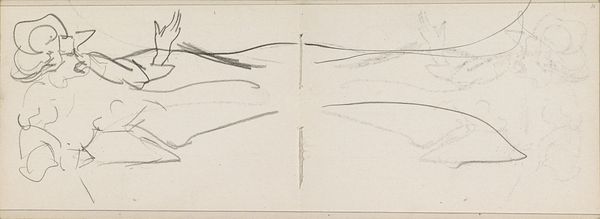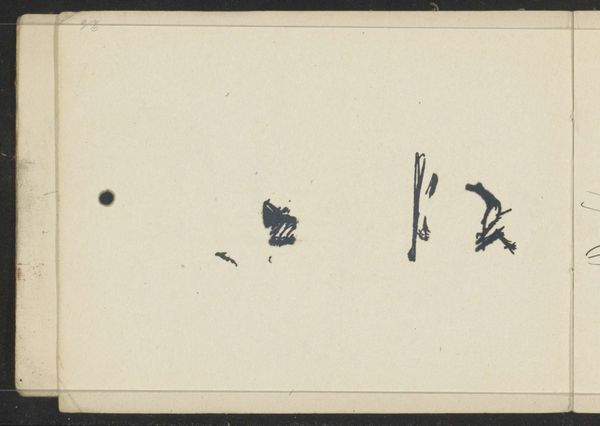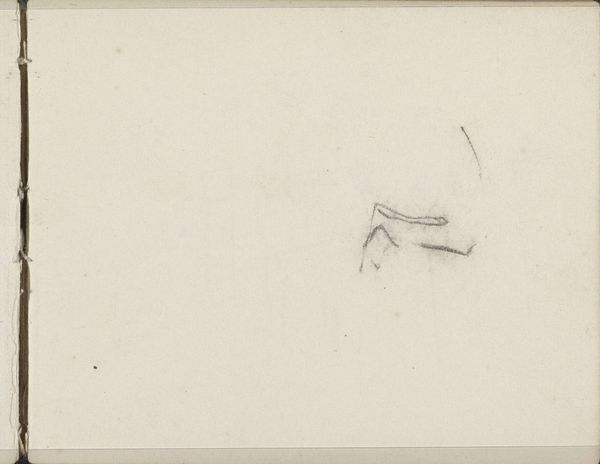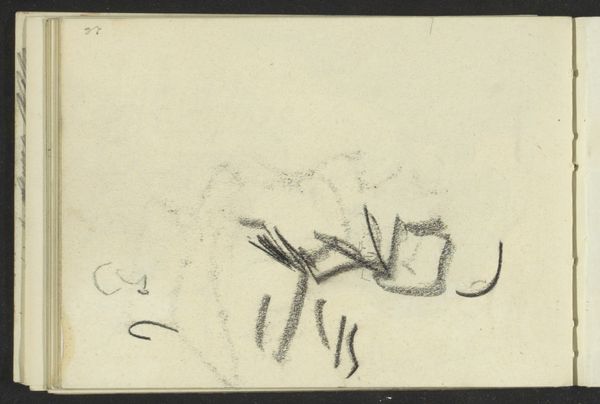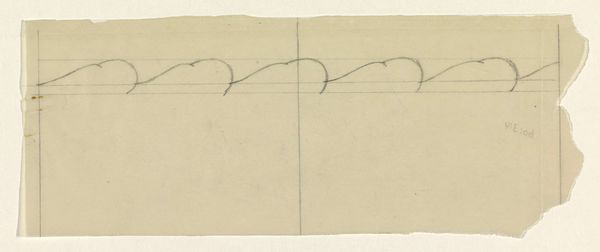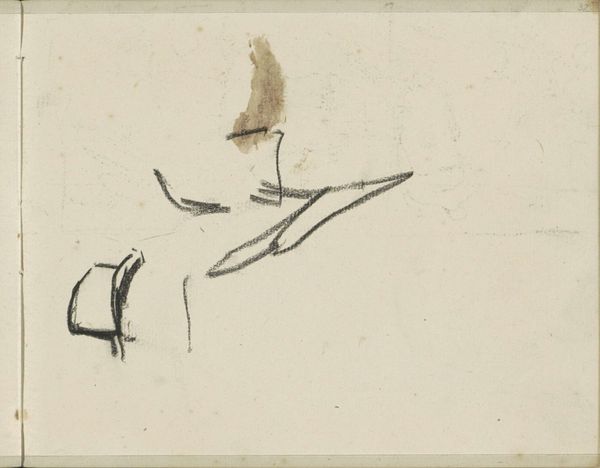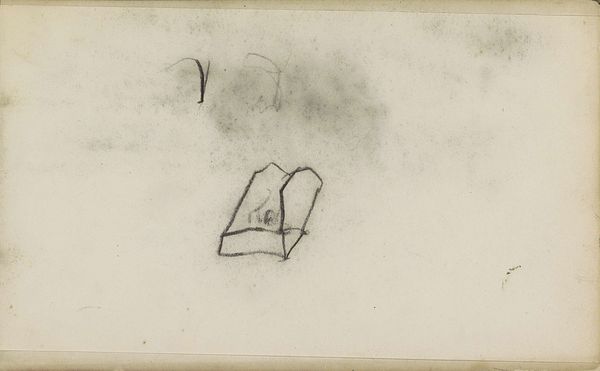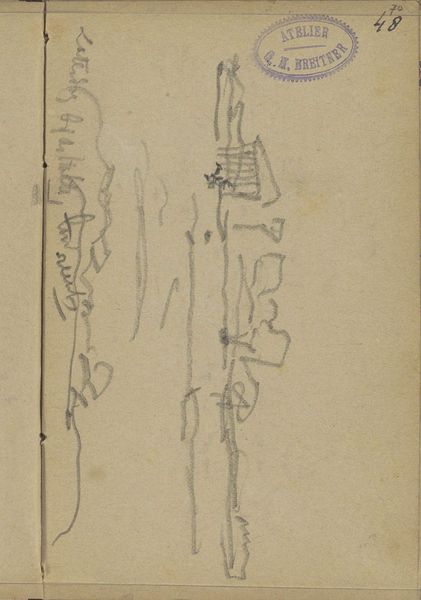
Copyright: Rijks Museum: Open Domain
Curator: Today we're looking at "Figuurstudies," a pen and ink drawing by Isaac Israels, likely from his sketchbooks, dating from 1875 to 1934. It's currently housed here at the Rijksmuseum. Editor: Wow, that's sparse! It's like looking at thoughts forming on paper, quick impressions rather than fully realized figures. Very ghostly, in a way. Curator: Indeed. Its immediate impact resides in its skeletal nature, a testament to economy of line. Note the calligraphic quality of the pen strokes. There's a distinct structural integrity even in its incompleteness. Editor: Right. Like little origami people, barely there. I imagine Israels, whipping this out on a train, catching fleeting moments. It feels so intimate, almost voyeuristic to see his raw observations. Curator: The piece exhibits an acute awareness of negative space. Consider how the artist leverages absence to define form, highlighting the fundamental relationship between figure and ground. This resonates with Impressionist principles, no? Editor: Totally! Capturing the essence of movement, light...the energy of being human. But it’s the almost reckless abandon of the strokes that gets me. He wasn't precious about it. Curator: I find myself appreciating how the implied narrative unfolds within the diptych format of the open sketchbook itself. One observes a progression, almost a conversation between the facing pages. Editor: You know, I initially saw emptiness, but now I see possibilities. A field of characters waiting to be born from the barest suggestions. Thanks for making me slow down and look, appreciate the void a little more. Curator: And you've beautifully articulated the latent potential embedded within the sketch's inherent open-endedness. It's a reminder that often, the most profound insights arise from the simplest forms.
Comments
No comments
Be the first to comment and join the conversation on the ultimate creative platform.
